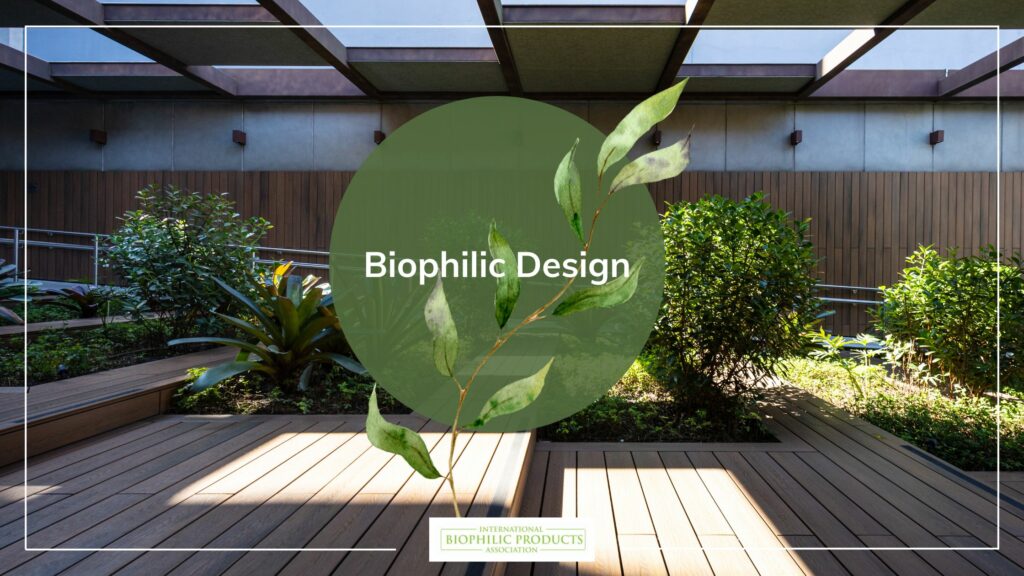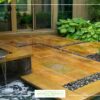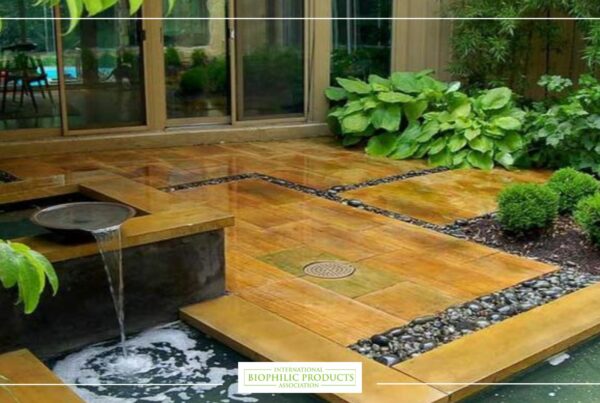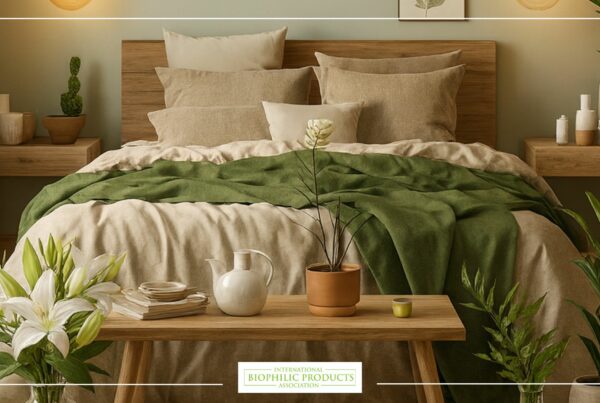
Understanding biophilic design
Have you ever stepped into a room filled with lush greenery or natural light and felt instantly at ease? That soothing, almost instinctive “ahhh” moment is often thanks to biophilic design—the practice of bringing elements of nature into our built environment. In short, biophilic design exists at the crossroads of architecture and ecology, shaping the spaces we inhabit to mimic, celebrate, and connect with nature.
In this article, we’re going to explore the core concept of biophilic design, some real-life examples, the organic building materials that help bring it to life, and the studies that make a compelling case for adopting green space and biophilic decor in our homes, offices, and communities. We’ll also answer some frequently asked questions about this green-minded approach—like the 5 senses and 6 principles of biophilic design, along with its three pillars. And finally, we’ll mention how you can tap into specialized services offered by Biophilic Products to create your own nature-driven oasis.
The essence of biophilia

The word “biophilia” means “love of life or living systems.” Coined by biologist Edward O. Wilson, it suggests that humans have an innate need to connect with nature and other living things. Biophilic design leverages that desire by weaving natural elements—like sunlight, fresh air, water, plants, and organic textures—into the very framework of our buildings.
Whether you call it biodesign, benefits of green architecture, or simply “nature-centric architecture,” the fundamental idea is the same: we flourish when our indoor spaces reflect the outdoor world. Green walls, large windows overlooking gardens, interior courtyards, and skylights that bathe rooms in natural light are all classic examples.
Learn more about: What is Biophilia?
A Quick Look at the Research
A number of studies—most notably the renowned Human Spaces global report—demonstrate how integrating natural elements into our built environments, from homes and offices to hospitals, can lead to significant improvements in human health and performance. This groundbreaking research, titled “The Global Impact of Biophilic Design in the Workplace” and published in 2015 by Interface, in collaboration with Professor Sir Cary Cooper of Lancaster University and the consultancy Robertson Cooper, surveyed over 7,600 office workers across 16 countries.
The findings are compelling: workers in environments with natural elements such as greenery and sunlight reported 15% higher levels of well-being, 6% greater productivity, and 15% more creativity compared to those in spaces devoid of naturehuman_spaces_report_bio…. Moreover, a third of all respondents stated that the design of an office would influence their decision to work for a particular company—highlighting biophilic design’s role in talent attraction and retention.
The study also reported measurable organizational benefits, including reduced absenteeism and presenteeism, improved morale, and stronger emotional engagement. Beyond psychological outcomes, biophilic design was associated with energy savings through natural lighting and temperature regulation, as well as higher levels of occupant satisfaction, making a compelling case for its incorporation not only for human wellness but also for environmental and economic performance.
For more information and access to the full report, visit Human Spaces – Biophilic Design Report
The core concept: what is biophilic design?
At its heart, biophilic design is an approach to shaping our built environment that strengthens our innate bond with nature. It tries to replicate the soothing, energizing, and healing effects we experience when we’re outdoors.
But it’s more than just tossing some houseplants into a corner. It’s about a holistic approach—lighting that follows the day’s natural rhythms, organic building materials that reflect the textures and colors found in nature, and spatial layouts that encourage exploration and discovery. Biophilic design aims to satisfy our mental, emotional, and even physical well-being by weaving the natural world into our everyday spaces.
Learn more about: Biophilic design has scientific support, and the numbers speak for themselves
Key principles and the “5 senses” of biophilic design
Engaging the senses
While biophilic design doesn’t limit itself to only five senses in a scientific sense, it does heavily emphasize designing for:
- Sight: the most obvious sense. Incorporating views of nature—like greenery or water features—dramatically impacts our mood.
- Sound: natural soundscapes (trickling water, birdsong, rustling leaves) can be calming or energizing, depending on the setting.
- Touch: natural textures like wood, stone, bamboo, and woven fibers provide tactile warmth and closeness to the outdoors.
- Smell: aromatic plants or subtle essential oils evoke forests, meadows, or gardens.
- Taste (sometimes): Indoor herb gardens or edible installations can give your space a literal flavor of nature!
The 6 principles of biophilic design
What are the 6 principles of biophilic design?
Different experts may break these down in various ways, but a common approach highlights six overarching guidelines:
- Visual Connection with Nature: provide clear views to outdoor greenery or bring in living plants.
- Natural Light and Airflow: maximize daylight exposure and fresh ventilation.
- Use of Organic Materials and Forms: incorporate textures, patterns, and shapes found in nature (wood grain, stone, leaf patterns).
- Indoor-Outdoor Integration: blur the lines between the inside and outside (like open courtyards, balconies, and transitional spaces).
- Sensory Variability: vary lighting, temperature, airflow, and textures to reflect natural rhythms.
- Local Environmental Connection: use local materials and design cues that resonate with the surrounding ecology and culture.
The three pillars
Though the wording varies across different studies, a popular framework for the “three pillars” of biophilic design often includes:
- Nature in the Space: direct presence of plants, water, animals, and natural light.
- Natural Analogues: materials, colors, shapes, and patterns that evoke nature (think leaf-inspired wallpaper or ocean-like color palettes).
- Nature of the Space: spatial configurations, from cozy nooks to open vistas, that tap into our primal preferences (like savanna-like settings with shade and prospect).
Learn more about: Not every green material is biophilic
Benefits of green architecture
You might be wondering: Why bother with green building and biophilic design when simpler (and sometimes cheaper) options exist? Well, the benefits of green architecture go far beyond aesthetics:
- Enhanced Well-being: countless studies link exposure to nature with lower stress, higher creativity, and improved overall mood.
- Increased Productivity: in workplaces, employees surrounded by plants or natural light often report getting more done—and feeling better while doing it.
- Reduced Energy Costs: a well-designed building that takes advantage of sunlight, shading, and natural insulation can significantly lower heating, cooling, and lighting expenses.
- Better Air Quality: plants can help filter pollutants, and natural ventilation strategies cycle fresh air through the space.
- Community and Biodiversity: biophilic structures (think green roofs and living façades) help expand habitats for birds, insects, and local flora—crucial as cities expand.
Practical applications for biophilic interior design
Biophilic interior design doesn’t necessarily require a complete remodel. You can create a nature-positive environment in big and small ways:
- Living Walls or Green Panels: Ideal for offices, lobbies, or accent walls in your home.
- Sunlight Maximization: Replace heavy drapes with sheer curtains or use glass partitions to let sunlight travel deep into the room.
- Natural Soundscapes: Incorporate water fountains or even curated nature sounds to make the indoors more tranquil.
- Open-Plan Layouts: Provide a sense of “prospect and refuge” by mixing open, airy areas with cozy corners.
- Indoor Garden Zones: Dedicate a small area for potted plants or an herb corner in the kitchen—great for cooking and ambiance.
Learn more about: 10 Simple Ways to Implement Biophilic Design Concepts in Your Home
Biophilic Products offers a range of solutions: how biophilic products can help
The magic truly happens when you pair the right ideas with the right materials, fixtures, and expertise. That’s where a specialized provider comes in. Biophilic Products offers a range of solutions—from living walls and custom planters to eco-friendly flooring and advanced daylighting strategies. Whether you’re a homeowner wanting to cozy up your living room with natural textures or a business aiming to revitalize your office with air-purifying greenery, Biophilic Products can help you seamlessly integrate nature into your design.
Learn more about: what are the benefits of biophilic design?
Biophilic design isn’t a fleeting trend; it reflects our deeper, long-standing bond with the environment. Through organic building materials, clever use of biophilic decor, and strategic integration of green space, we can build homes, offices, and public venues that nourish the mind and body. And with organizations like Biophilic Products leading the charge, anyone can find practical ways to harness nature’s transformative power in any kind of space—whether it’s a suburban home, a bustling corporate hub, or a cozy café on a crowded city block.
By tapping into nature’s rhythms and resources, we not only enrich our personal well-being but also support a healthier, more sustainable future for everyone. If that sounds like a win-win to you, then biophilic design is definitely worth exploring—one leaf, beam of sunlight, and trickling water feature at a time. Enjoy your greener, healthier surroundings!
FAQs about Biophilic Design
What is the concept of biophilic design?
Biophilic design centers on merging the built environment with the natural world. It involves using greenery, organic materials, and natural light to foster well-being, sustainability, and a sense of calm in our daily spaces.
What are the 5 senses of biophilic design?
Generally, we talk about sight, sound, touch, smell, and sometimes taste. By catering to these senses with natural elements, the indoor experience feels more immersive and soothing.
What are the 6 principles of biophilic design?
Although different sources break them down slightly differently, a common set includes:
(1) visual connection to nature,
(2) natural light/airflow,
(3) use of organic materials/shapes,
(4) indoor-outdoor integration,
(5) sensory variability, and
(6) local environmental connection.
What are the three pillars of biophilic design?
Often described as:
(1) Nature in the space (direct contact with natural elements),
(2) natural analogues (materials/colors that mimic nature), and
(3) nature of the space (layout and spatial configurations that mirror nature’s logic).











13 Comments